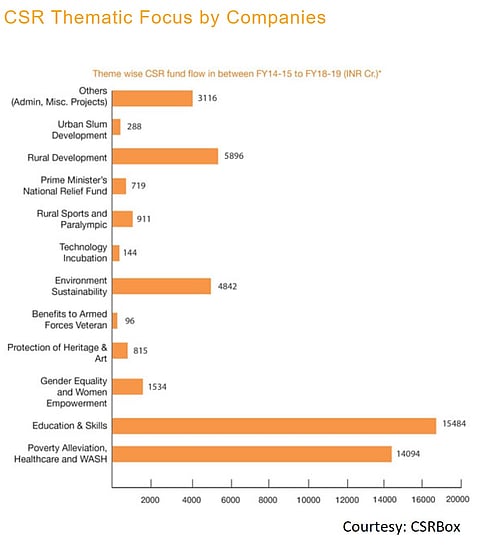Corporate Social Responsibility (CSR) spending in agriculture is far less in comparison to many other sectors like education, healthcare, art and culture, etc, claimed a study.
CSR Spending In Agriculture Far Less Than Other Sectors: Study
More investment needed to address problems like bottlenecks in supply chain and better market conditions for farm products
The provision of mandatory CSR expenditure on agriculture sector may be helpful to bring the farm sector out of distress, said Delhi University Professor Rajeev Kumar Upadhyay in his paper ‘Corporate Social Responsibility and Sustainable Growth in Agriculture in India’.
He also pointed out that by pooling, the CSR resources can help to build and operate large projects to tackle the problem of bottlenecks like cold storage and logistic infrastructure in agriculture.

“Tax benefits to donations to entities involved into operating such agriculture projects will not only help to build such projects but increase economic activities in rural economy,” the research paper suggested.
It has pointed out that some large firms were voluntarily spending a part of their earnings on CSR initiatives even before the provisions introduced relating to CSR in Companies Act 2013.
But there is a need to put a mechanism to avoid overlap of different schemes by the governments as well as CSR projects for the benefit to the larger section of society, the researcher opined.
The intervention by corporates is said to have a huge impact on the socio-economic environment.
The study was aimed at finding out the spending patterns of CSR corpus using publicly available expenditure data on agriculture by 20 Indian corporates.
CSR activities in agriculture, says the paper, cover a wide range of issues such as rain water harvesting, introduction of solar pump, organic farming, seed management, soil management, delivery of agro information as well as market place ecosystem, etc.
But it stresses the need for more investment to address problems like bottlenecks in supply chain and better market conditions for farm products to improve the income level of farmers.
There is a natural inertia to shift to new methods of farming to less chemical fertilisers intensive farming, it observed.
Agriculture sector employs the largest number of people in India. According to the World Bank, more than 50% of Indian families are dependent on agriculture for livelihood.
Yet, writes Upadhyay, the contribution of agriculture in GDP has come down to 14.46% in 2018-19 from around 50% at the time of Independence.
Tags